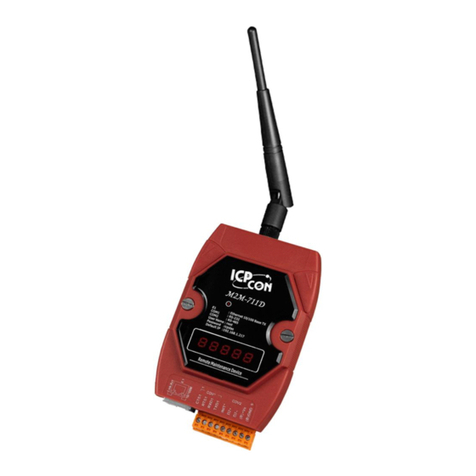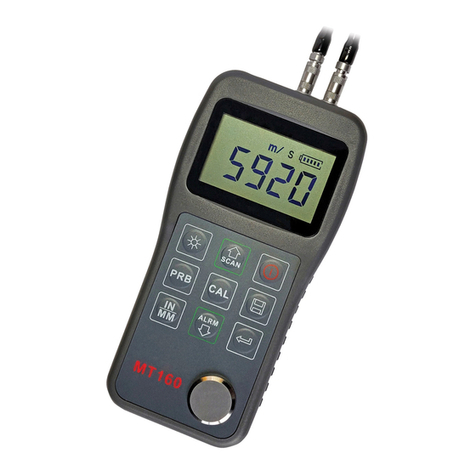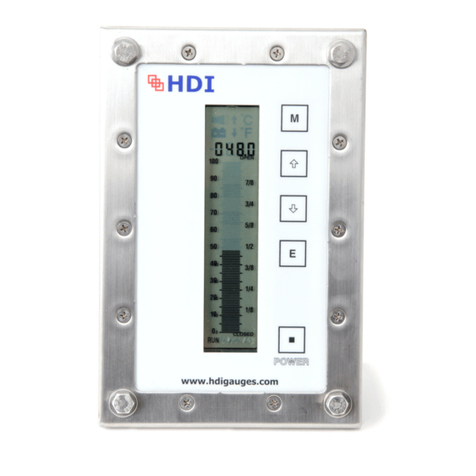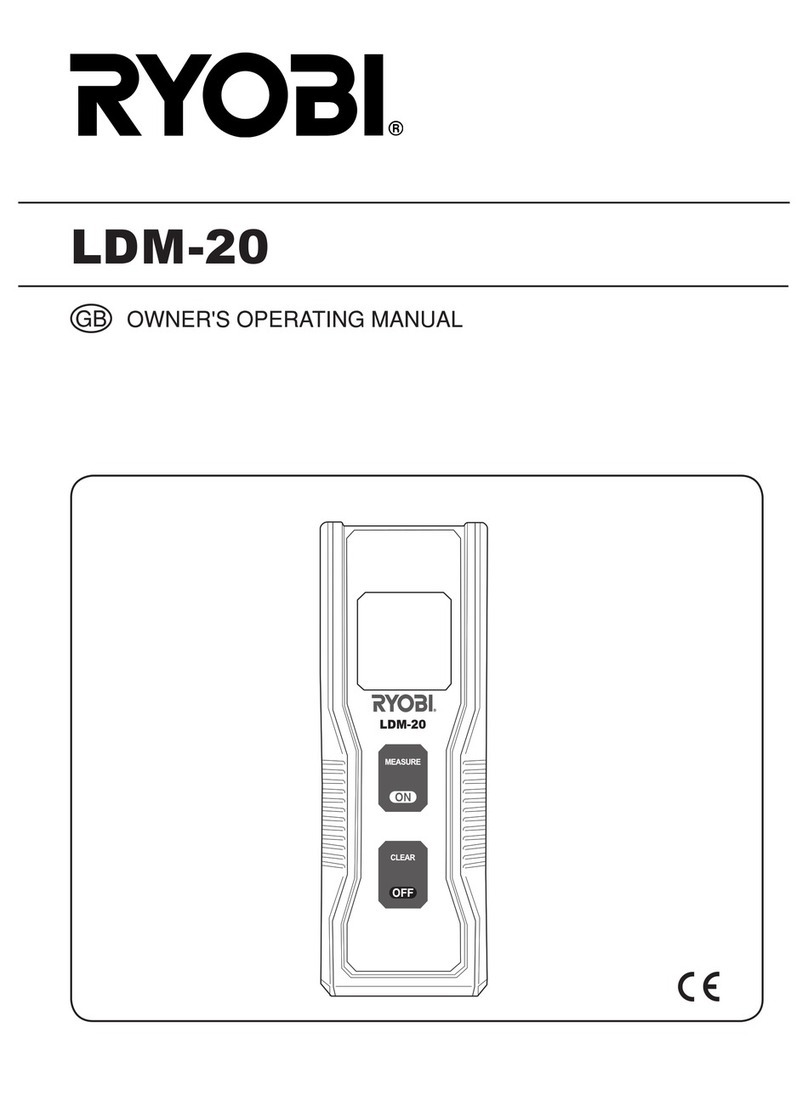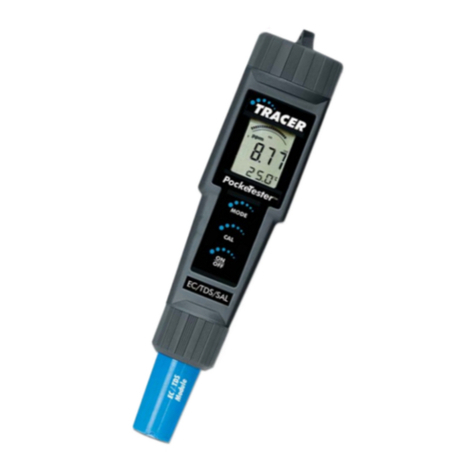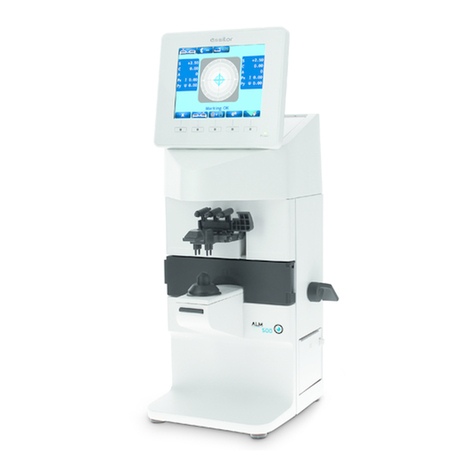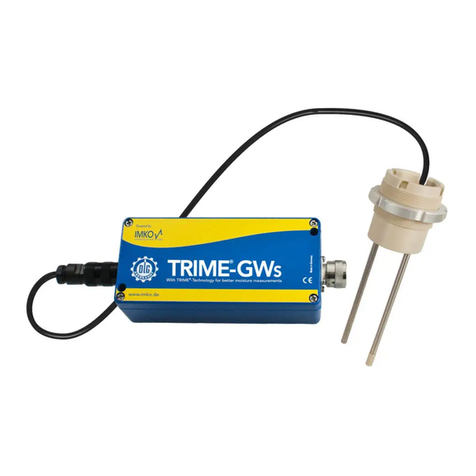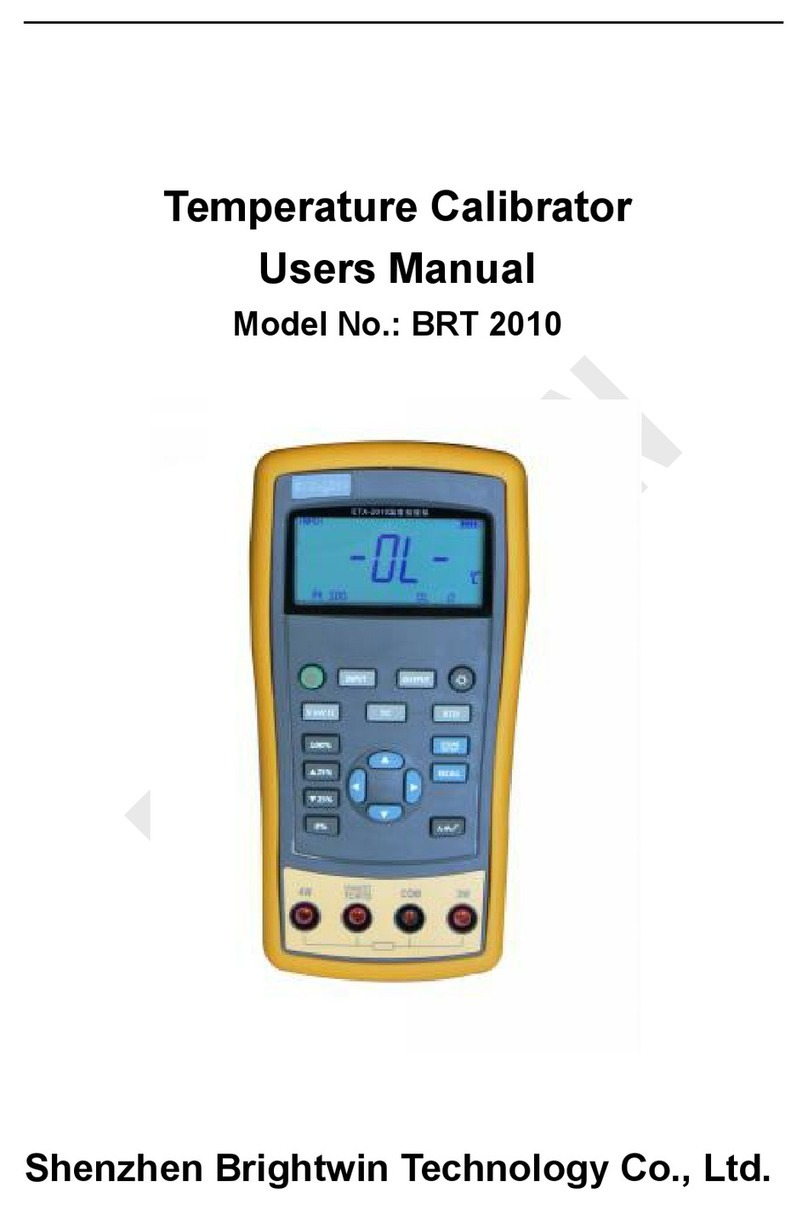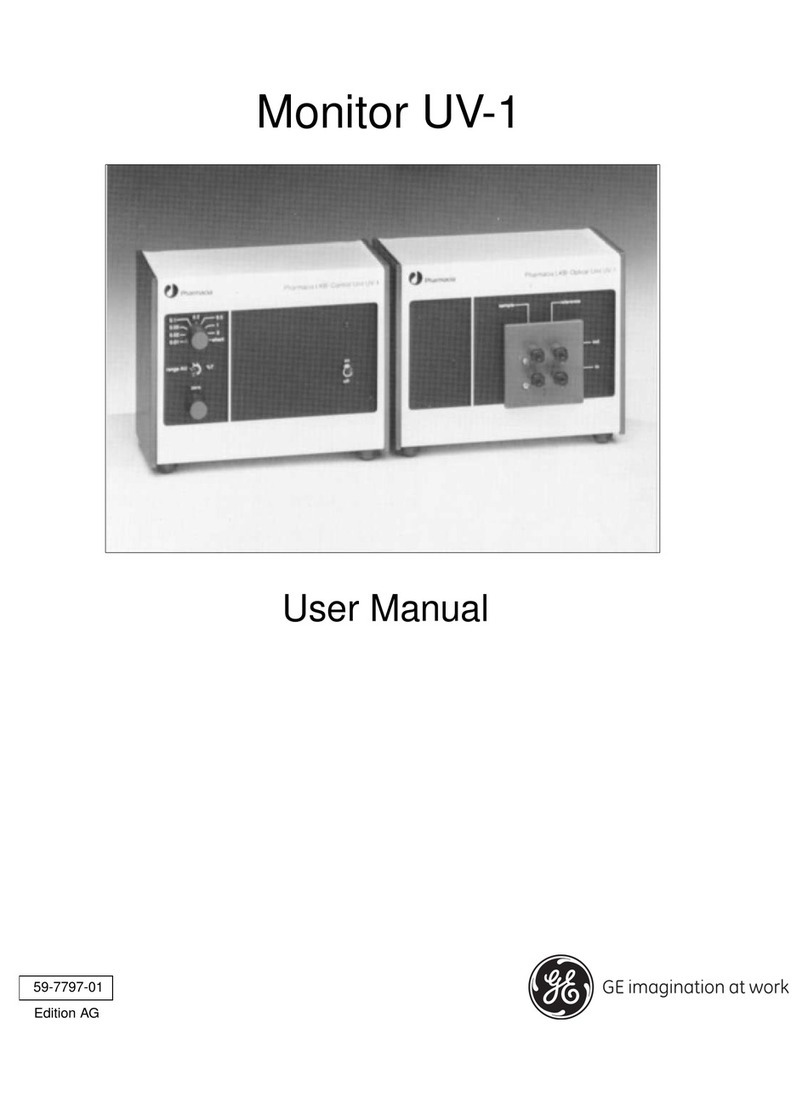Bongshin BS-235 User manual

BS-235
Digital Indicator
The Better Way for Weighing &
Measurements


1
Table of Contents
1. Introduction.....................................................................................................................................3
1-1 Trait ................................................................................................................................................... 3
1-2 Warning ............................................................................................................................................. 4
2. Specification......................................................................................................................................5
3. External Size......................................................................................................................................6
4. Description on Front Panel…...........................................................................................................7
5. Description on Rear Panel................................................................................................................9
5-1 Description on Each Terminal Unit...................................................................................................... 9
5-2 How to Use Terminal Block and Replace Fuse...................................................................................12
6. Calibration………………………............................................................................................................13
6-1 Calibration Mode …………………………........................................................................................... 13
6-2 Digital Calibration Mode..................................................................................................................... 14
6-3 Actual Load Calibration Mode............................................................................................................ 16
6-4 Linearization Calibration Mode .......................................................................................................... 18
6-5 Digital Zero Calibration Mode ............................................................................................................ 21
7. Function Mode.................................................................................................................................24
7-1 Function Setting Method.................................................................................................................... 24
7-2 Function Items ………………............................................................................................................... 25
8. HOLD ………....................................................................................................................................30
8-1 Hold Mode......................................................................................................................................... 30
8-2 Hold Type .......................................................................................................................................... 32
8-3 Hold Operation .................................................................................................................................. 33
9. Relay Mode .....................................................................................................................................35
9-1 Relay Mode ..................................................................................................................................... 35
9-2 Relay Comparator Mode................................................................................................................... 37

2
10. Analog Output...............................................................................................................................44
10-1 Analog Output Mode ...................................................................................................................... 44
10-2 Analog Output Specification and Connection Method..................................................................... 45
10-3 Analog Output Zero and Span Calibration...................................................................................... 46
10-4 Analog Output Zero and Span Minute Calibration........................................................................... 48
10-5 Analog Output Check...................................................................................................................... 50
11. Serial Output....................................................................................................................................51
11-1 RS-232C/422/485 Serial Interface ....................................................................................................... 51
11-2 Format ……….................................................................................................................................. 53
12. Check Mode ....................................................................................................................................61
12-1 Operation for Each Check Mode............................................................................................................ 61
13. Key Lock Mode ...............................................................................................................................64
13-1 Key Lock Method ............................................................................................................................... 64
13-2 Key Lock Cancellation Method ............................................................................................................. 64
14. Repair .............................................................................................................................................65
14-1 Error Message .................................................................................................................................. 65
14-2 Load Cell Inspection ........................................................................................................................... 65
14-3 Load Cell Access Diagnosis................................................................................................................. 66
14-4 Pattern of Display Letters ..................................................................................................................... 66
15. Warranty and A/S ............................................................................................................................67

3
1. Introduction
Thank you very much for purchasing this product.
This product is a model adequate for weighing and measurement system.
This equipment is a product equipped with abundant function and various external interface functions to
accommodate diverse wants of user and user can easily use this product with easy handling.
All functions can sufficiently be utilized if you thoroughly read the manual before use.
1-1 Features
BS-235 is high precision high speed indicator of 48x96mm size.
■ High precision 24bit Sigma-Delta A/D converter
■ High speed A/D and D/A conversion of 2000 time/sec
■ A/D external resolution 1/30,000
■ Actual load or digital calibration
■ Linearity Compensation Function (4 point excluding zero)
■ Low, OK, and High relay contact output
■ Hold or Peak-hold function
■ Serial Output insulation (option 1, 2, 3 - RS-232C & RS-422/485)
■ Change in relay setting value is available through communication (max. 16 ID)
■ Sensor output check function (failure inspection)
■ Analog output insulation (option 4, 5)
■ Power Source (AC 85~240V or DC 10~30V)

4
1-2 Warning
■ Check whether or not there was damage in product during the delivery.
■ Do not drop or exert server impact on the product.
■ Front panel control button is operated with light touch thus do not exert excessive strength.
■ Do not use or store product at location with severe temperature change if possible. (-10°C ~ +50°C)
■ Do not install the product at location with severe electric noise and vibration.
■ Turn off the power switch before connecting peripherals.
■ Grounding of equipment shall be conducted in order to prevent electric noise and fall.
■ Exertion of voltage or current over maximum allowable value will lead to damage in the product.
■ Power voltage shall be set within allowable range.
Use outside allowable range may cause fire, electric shock, and defect.
■ Please understand the fact that contents of manual may be changed without in advance notice.
■ Please directly contact the agency or our company regarding the inquiries to the contents of manual.
■ Please store the manual at location where it can be seen at any time after reading the manual.

5
2. Specification
Load Cell excitation DC 5V, 60mA ( 350Ω x 4 load cells can be connected )
Min. Input Sensitivity 0.2μV /Digit (min.)
Non-linearity 0.01% F.S. max.
Analog Input Signal Range -34 mV ~ +34 mV
Temperature drift Zero: ±0.1μV/°C RTI max.
SPAN: 10ppm/°C max.
Input Noise ±0.3μVpp or less
Input Impedance 10MΩ or more
A/D Internal Resolution 24 bits
Max. Display Resolution 1/30,000
A/D Sampling Speed 2,000 times/sec
Display 7-Segment red LED, 6-Digits 14.1mm high 6digit
Range of Max. Display (-)199999 ~ (+)999999
Display Conversion Speed 1,000 times/sec ~ 1 time/sec
Polarity indication (-) “-“ minus sign
Annunciators LO, OK, HI, HOLD, ZERO, STABLE
Display increments 1, 2, 5, 10, 20, 50 selectable
Decimal Point Location 0, 0.0, 0.00, 0.000, 0.0000 (selectable to any points)
Power Source AC 85~240V, 50/60Hz (Free Voltage) or DC 10~30V
Power Consumption Approx. 20VA
Range of Use Temperature -10°C ~ +50°C
Basic Output 0) Relay 3CH Output
Option Output
1) RS-232C Isolated Serial Output
2) RS-422 Isolated Serial Output
3) RS-485 Isolated Serial Output
(Conversion into RS-422/485 is available by user)
4) DC 0 ~ ±10V Isolated Analog Output
(Conversion into DC 0 ~ ±5V is available by user)
5) 4 ~ 20mA Isolated Analog Output
(Conversion into DC 0 ~ 20mA is available by user)
Product Weight About 410 g

6
6119 11
136
48
91
43
96
92
44
OPTION
1234
SIG+
SIG-
SHD
413265 7 8 9 10 11 12 13 14 15
ZERO
COM1
INPUT RELAY OUTPUT
(L1)LO
HOLD
COM2
HI
OK
(L3)
(L2)
POWER
F.G
GND
High Precision DIGITAL INDICATOR
M
L (+)
AC 85~240V
DC 10~30V
PANEL
GUIDE
3. External Size

7
4. Description on Front Panel
STABLELO HI HOLDOK ZERO
M
High Precision DIGITAL INDICATOR
Weight Value Display
Key Switch
Status Lamp
Weight Value Display Display of measurement data and setting value is conducted.
Setting of decimal point is conducted at function mode.
Status Lamp
LO : It flickers when it is lower or higher than rLY1(L1) relay setting value.
It flickers when low value ≤ measurement value ≤ max value.
OK : It flickers when it is lower or higher than rLY2(L2) relay setting value.
It flickers when low value ≤ measurement value ≤ max value.
HI : It flickers when it is lower or higher than rLY3(L3) relay setting value.
It flickers when low value ≤ measurement value ≤ max value.
HOLD : It flickers when hold is conducted.
ZERO : It flickers when measurement value is 0 (zero).
STABLE : It flickers when measurement value is stable.
Peak HOLD : Turns on when the hold function is started.
Edge HOLD : Turns on when the value is being held.

8
M
M
M
M
Key Switch
It is used when entering user setting mode from measurement mode.
It is used when exiting to measurement mode from user setting mode.
(ESC function)
It is used as a key to increase and decrease the numerical value of selected
number line of user setting mode.
It is used as calibration mode entry key
It is used as check mode entry key
It is used as location shift key when entering numerical value of user setting mode.
It is used as calibration mode entry key
It is used as check mode entry key
It is used when shifting to next menu from user setting mode.
It is used to save or exit after entering various setting values.
It is used as calibration mode entry key.
ZERO Setting
+
It is used for zero setting.
(No.2 key while pushing No.4 key or No,.4 key while pushing No.2 key)
Function Mode
+
It is used when entering function mode.
(No. 2 key while pushing No.1 key or No.1 key while pushing No. 2 key)
Calibration Mode
+
It is used when entering calibration mode.
(No.3 key while pushing No.,2 key or No,.2 key while pushing No.,3 key)
Relay Setting
+
It is used when entering relay setting mode.
(No.3 key while pushing No.1 key or No.1 key while pushing No.3 key)
Hold Mode
+
It is used when entering hold mode.
Hold is cancelled when pushing this key once again.
(No.1 key while pushing No.4 key or No.4 key while pushing No.1 key)
Key Lock or Unlock
+
It is used for key Lock or unlock.
Lock/ unlock is repeated ever time you push this key.
(No.3 key while pushing No.4 key or No.4 key while pushing No.3 key)
Check Mode
Power OFF
+
Power ON
It is used when entering check mode.
Turn the power on when pushing two keys at once after turning off the power
(No.2 key and No.3 key at once)
※ Itdoesnotmatterwhetheryoupushonekeybeforeanotherortwokeysatonceincaseofmodetoenterby
pushingtwokeys.

9
OPTION
1234
SIG+
SIG-
SHD
413265 7 8 9 10 11 12 13 14 15
ZERO
COM1
INPUT RELAY OUTPUT
(L1)LO
HOLD
COM2
HI
OK
(L3)
(L2)
POWER
F.G
GND
L (+)
AC 85~240V
DC 10~30V
Option
Load Cell Power Source
Frame Grounding
Relay OutputInput Signal
Connection
OPTION
1234
SIG+
SIG-
SHD
413265 7 8 9 10 11 12 13 14 15
ZERO
COM1
INPUT RELAY OUTPUT
(L1)LO
HOLD
COM2
HI
OK
(L3)
(L2)
POWER
F.G
GND
L (+)
AC 85~240V
DC 10~30V
OPTION
SIG+
SIG-
SHD
413265 7 8 9 10 11 12 13 14 15
ZERO
COM1
INPUT RELAY OUTPUT
(L1)LO
HOLD
COM2
HI
OK
(L3)
(L2)
POWER
F.G
GND
L (+)
AC 85~240V
DC 10~30V
1234
5. Description on Rear Panel
[StandardSpecification][Analog&SerialOutputOption]
5-1 Description on Each Terminal Unit
5-1-1 Power (AC IN / DC IN)
Terminal No. Name Contents
13 L (DC +) AC IN (DC IN +) Power Input Terminal
14 N (DC -) AC IN (DC IN -) Power Input Terminal
15 GND Power Ground
Access to AC power code is conducted. Input power is AC85~240V and 50/60Hz.
Access to DC power code is conducted. Input power is DC10~30V.
(DC power supply type is order specification.)
It does not turn on if the polarity is reversed during DC power supply.

10
OPTION
1234
SIG+
SIG-
SHD
413265 7 8 9 10 11 12 13 14 15
ZERO
COM1
INPUT RELAY OUTPUT
(L1)LO
HOLD
COM2
HI
OK
(L3)
(L2)
POWER
F.G
GND
L (+)
AC 85~240V
DC 10~30V
5-1-2 LOAD CELL Connection (1) (2) (3) (4) (5)
Terminal No. Name Contents
1 SIG - Load Cell Input Voltage (-), Blue wire
2 SIG + Load Cell Input Voltage (+), Green wire
3 EXC - Load Cell Voltage (-), White wire
4 EXC + Load Cell Voltage (+), Red wire
5 SHIELD Load Cell Grounding
Warning
Loadcelloutputisveryweakthusloadcellcableshallbe
separatedandtheninstalled.
Pleaseuseshieldcableforloadcellcable.
Incaseofextendingtheloadcellcable,useofloadcellcable
ofourcompanyisrecommended.
ShieldcableofloadcellcableshallbeconnectedtoBS‐235
terminalonly.
Incaseofsealing,roadcellinputcableSIG+(green)andSIG‐(blue)cableshallbeconnectedtoNo.1and
No.2respectively
.
Theremaybeabnormalityinrelayoperationandoptionoutputwhentheweightisdisplayedin(‐)value.
Pleasecheckwhetherornotcolorofcableforeachmanufacturer’sandloadcellmodelis
differentornotbeforetheconnection.

11
5-1-3 Input (6) (7) (8)
Terminal No. Name Contents
6 COM1 Common terminal of external control
7 ZERO Control terminal of zero function
Valid from COM1 terminal and short circuit (or on coin)
8 HOLD Control terminal of hold function
Valid from COM1 terminal and short circuit (or on coin)
Relay contact or switch or contactless switch such as
open collector output shall be used.
Arbitrary point hold is conducted at the point of granting
external contact point.
Hold is cancelled when grating the contact point.
Peak hold only holds max value during the time contact point
is granted and it is cancelled when contact point is not
granted.
5-1-4 Output (9) (10) (11) (12)
Terminal No. Name Contents
9 COM2 Common terminal for relay output
10 HI (L3) HI (L3) relay output terminal (a, b contact point output based on mode setting)
11 OK (L2) OK (L2) relay output terminal (a, b contact point output based on mode setting)
12 LO (L1) LO (L1) relay output terminal (a, b contact point output based on mode setting)
Output method differs based on relay mode setting.
Refer to relay operation mode.
Relay contact point capacity is 5A 250VAC,
5A 30VDC.
5-1-5 Option (Serial Output)
They are RS-232C/ RS-422/ RS-485 output port. (equipped upon selection)
5-1-6 Option (Analog Output)
They are analog output DC 0~±5V, 0~±10V, DC 0~20mA, 4~20mA output terminal.
(Selection from function mode)
Analog output option is equipped upon selection.
Serial output option and analog output option cannot be equipped at the same time.
In case of using RS-422, RS-485 shall be changed into RS-422 at function mode.

12
Fuse
OPTION
1234
SIG+
SIG-
SHD
413265 7 8 9 10 11 12 13 14 15
ZERO
COM1
INPUT RELAY OUTPUT
(L1)LO
HOLD
COM2
HI
OK
(L3)
(L2)
POWER
F.G
GND
L (+)
AC 85~240V
DC 10~30V
Loosen the bolt Fuse
Loosen the no-head wrench bolt
1
2
5-2 How to Use Terminal Block and Replace Fuse
5-2-1 How to use terminal block
1) Peel off the sheath at the end of cable.
2) Terminal is opened when putting driver inside the terminal opening device
(top of terminal) and push.
3) Terminal is fastened when inserting the cable and pulls back the driver.
Forcedentryofcabletoterminalmaycausethedamageofterminal.
Donotinsertcabletotopofterminaltoinsertdriver.
5-2-2 How to replace fuse
1) Loosen the bolt of rear panel and loosen the no-head wrench bolt.
Pull off PCB as illustrated in the figure.
2) Replace the fuse. (Fuse Capacity: 250V 2.0A)
3) Assembly shall be conducted in reverse of disassembly.
* Fuse spec.
Subminiature Fuses
Cooper Bussmann SS-5-2A
Warning
Itshallbeconductedonlywhenthepoweristurnedoff.
Ifthereplacementisduetodamagetothefuse,directsolderingshouldbesenttous.

13
12 3
M
M
High Precision DIGITAL INDICATOR
M
High Precision DIGITAL INDICATOR
M
High Precision DIGITAL INDICATOR
6. CALIBRATION
There are three types of calibration mode.
6-1 Calibration Mode
6-1-1 Mode
■ Digital calibration mode
Calibration shall be conducted not by using the actual load but entering rated output and
rated capacity of sensor with key.
■ Actual load calibration mode
It is calibration mode to adjust zero and span with the use of actual load.
■ Linearization calibration mode
It is calibration mode to conduct non-linear calibration that reduces the measurement error
through calibration of maximum 4 points excluding zero with the use of actual load.
6-1-2 How to select calibration mode
1. It turns into the mode selection status when key is pushed while pushing key is
pushed at measurement status.
2. Mode change and setting value change is available when key or key is pushed at
mode selection status.
3. Push key in order to move onto next stage after saving the setting value at mode
selection status.
4. Push key to cancel the setting and return to measurement mode for mode
cancellation.
When you push No.3 key
while pushing No.2 key,
entry to calibration mode is
available.
Change the mode with
No.2 or No.3 key.
(
d-CAL→A-CAL→L-CAL)
After selecting the mode,
Press No.4 key to proceed
with calibration.
Push No.1 key for mode
cancellation.

14
123
12 3
456
M
High Precision DIGITAL INDICATOR
M
High Precision DIGITAL INDICATOR
M
High Precision DIGITAL INDICATOR
M
High Precision DIGITAL INDICATOR
M
High Precision DIGITAL INDICATOR
M
High Precision DIGITAL INDICATOR
M
High Precision DIGITAL INDICATOR
M
High Precision DIGITAL INDICATOR
M
High Precision DIGITAL INDICATOR
6-2 Digital calibration mode
6-2-1 Calibration Method
Step 1. Decimal point setting and min. gradation setting
When you push No.2 key while
pushing No.1 key, entry to
function mode is available.
It is changed to decimal point
mode when you push No. 4
key.
After ‘dP’ display,
Push No.4 key by changing
decimal point by pushing No.2
or No.3 key.
A
fter ‘dIv’ display,
Input is completed when you
push No.4 key after changin
g
Min, unit with the use of
either No.2 or No.3 key.
A
fter ‘rAtE’ display,
It is changed in measuremen
t
mode when you push No. 1
Key.
Decimal point change and
minimum unit change have
been completed.
Step 2. Rated output and capacity setting of Load Cell
Push No.3 key while pushing
No,2 key.
Change the mode to d-CAL
with either No.2 or No.3 key.
Enter into d-CAL mode by
pushing No.4 key

15
56
12
4
M
High Precision DIGITAL INDICATOR
M
High Precision DIGITAL INDICATOR
M
High Precision DIGITAL INDICATOR
M
High Precision DIGITAL INDICATOR
M
High Precision DIGITAL INDICATOR
M
High Precision DIGITAL INDICATOR
M
High Precision DIGITAL INDICATOR
A
fter ‘LCCAL’ display,
Input load cell rated output
using No. 2 and No.3 key and
Push No.4 key.
ex) 2.0000 mV/V
A
fter ‘CAPA’ display,
Input rated capacity of load cell
with the use of No.2 and No.3
key.
ex) 20.000 kg
Digital input is completed when
pushing No.4 key and it returns
to measurement mode.
Step 3. Zero Calibration
Push No.2 key while pushing
No.4 key.
Zero calibration is
completed.
Ifzerocalibrationisperformedinanunstableenvironment,measurementerrorsmayoccur.
Warning
Theabovemethodisdescribedasanexample,soyouneedtosetitupaftercheckingtheloadcell
installedinthefield.
Althoughthesettingrangeofresolutionis1/30000orlowerbutdisplayisconductedevenwhenit
exceeds30000.
Errormaygeneratefordigitalcalibrationmode.
Conductregularcheckonmeasurementandconductcalibrationuponnecessity.
Calibrationunderinstableenvironmentmaycausethemeasurementerror.

16
123
12 3
456
M
High Precision DIGITAL INDICATOR
M
High Precision DIGITAL INDICATOR
M
High Precision DIGITAL INDICATOR
M
High Precision DIGITAL INDICATOR
M
High Precision DIGITAL INDICATOR
M
High Precision DIGITAL INDICATOR
M
High Precision DIGITAL INDICATOR
M
High Precision DIGITAL INDICATOR
M
High Precision DIGITAL INDICATOR
6-3 Actual load calibration mode
6-3-1 Calibration Method
Step 1. Decimal point setting and min. gradation setting
Entry to function mode is
available when pushing No.2
key while pushing No.1 key.
It changes to decimal point
mode when pushing No.4 key.
A
fter ‘dP’ display,
Push No. 4 key after changing
decimal point by pushing
either No.2 or No.3 key.
After ‘dIv’ display,
Input is completed when yo
u
No.4 key after changing mi
n
unit by pushing either No.2
or No.3 key.
A
fter ‘rAtE’ display,
It returns to measurement
mode when pushing No. 1 key.
Decimal point change and
min. unit change have been
completed.
Step 2. Zero calibration and dead weight setting
Push No.3 key while pushing
No. 2 key.
Change the mode to A-CA
L
with either No.2 or No.3 key.
Enter into A-CAL mode by
pushing No.4 key.

17
456
10
789
M
High Precision DIGITAL INDICATOR
M
High Precision DIGITAL INDICATOR
M
High Precision DIGITAL INDICATOR
M
High Precision DIGITAL INDICATOR
M
High Precision DIGITAL INDICATOR
M
High Precision DIGITAL INDICATOR
M
High Precision DIGITAL INDICATOR
Select Unload among Load and
Unload with the use of No.2
and No.3 key and push No.4
key when there is nothing on
load cell.
Conduct zero calibration.
If the zero setting has already
been made and the weight is
placed on the weighbridge,
you can proceed by selecting
load without unloading.
It is changed to dead weigh
t
value mode when pushing
No. 4 key after load display.
Input dead weight value with
the use of No. 2 and No,.3
key.
ex) 5.000kg
Push No.4 key after exerting
actual load to load cell.
Actual load calibration has
been completed.
Err0 is played and it is turned to LoAd
status when load is small or directio
n
of load is applied toward (-) direction.
Check the dead weight value indicated to display.
Check the zero point return status after lowering the dead weight and
Step2 shall be executed repeatedly when there is abnormality.
Warning
Displayspeedshallbesetasslowaspossibleinfunctionmodeduringcalibrationinorderto
displaystablevalue.
Althoughresolutionsettingrangeis1/30000orlower,displayisstillconductedwhenitexceeds30000.
Conductregularcheckonmeasurementandconductcalibrationuponnecessity.
Calibrationunderinstableenvironmentmaycausethemeasurementerror.
Itisrecommendedthattheuseofdeadweightwithover2/3ofmaxcapacityisrecommended
inordertoreducetheerror.

18
123
456
M
High Precision DIGITAL INDICATOR
M
High Precision DIGITAL INDICATOR
M
High Precision DIGITAL INDICATOR
M
High Precision DIGITAL INDICATOR
M
High Precision DIGITAL INDICATOR
M
High Precision DIGITAL INDICATOR
6-4 Linearization Calibration Mode
6-4-1 Calibration Method
A little measurement error may occur in between the max capacity due to trait of measurement
unit even upon the completion of zero and span calibration. Linearization calibration mode is a
type of calibration mode which conducts non-linear calibration that reduces the measurement
error by conducting calibration with max 4 points excluding the zero with the use of actual load.
ZERO
0 Weight Value
Display
Error
ZERO
Before linear compensation After linear compensation
0 Weight Value
Display
Calibration point 1 (Load1)
Calibration point 2 (Load2)
Calibration point 3 (Load3)
SPANSPAN
Step 1. Decimal point setting and min gradation setting
Enter into function mode by
pushing No.2 key while
pushing No.1 key.
It is changed to decimal point
mode when pushing No. 4 key.
After ‘dP’ display,
Push No.,4 key after changing
decimal point by pushing
either No.2 or No.3 key.
After ‘dIv’ display,
Input is completed when you
push No.4 key after changing
min unit by pushing either
No.2 or No.3 key.
A
fter ‘rAtE’ display,
It is changed to measurement
mode when pushing No.1 key..
Decimal point setting and min.
unit setting have been
completed.
Table of contents
Other Bongshin Measuring Instrument manuals
Popular Measuring Instrument manuals by other brands
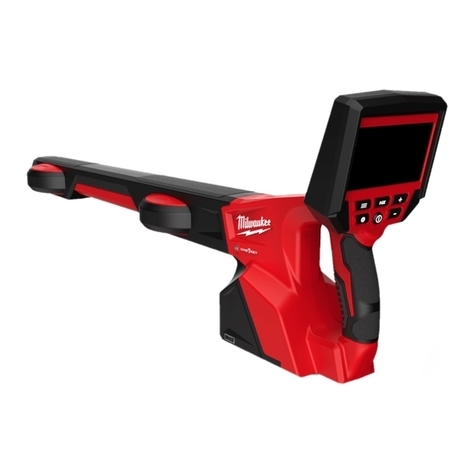
Milwaukee
Milwaukee HEAVY DUTY M12 PL Original instructions

AMI
AMI 3010B Operator's manual
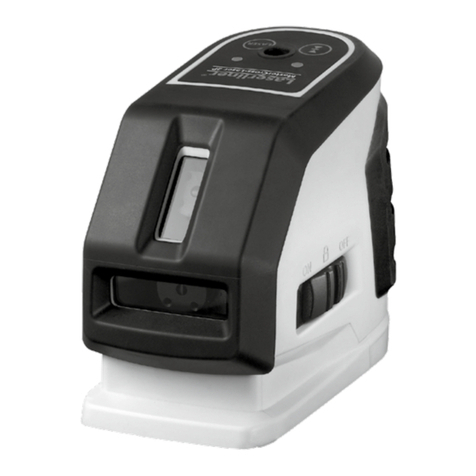
LaserLiner
LaserLiner MasterCross-Laser 2P operating instructions
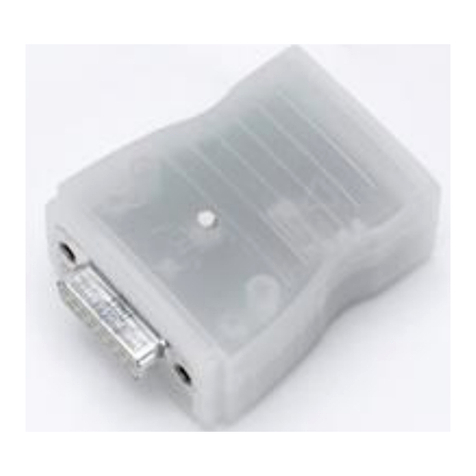
LD Didactic
LD Didactic Pocket-CASSY 2 operating instructions
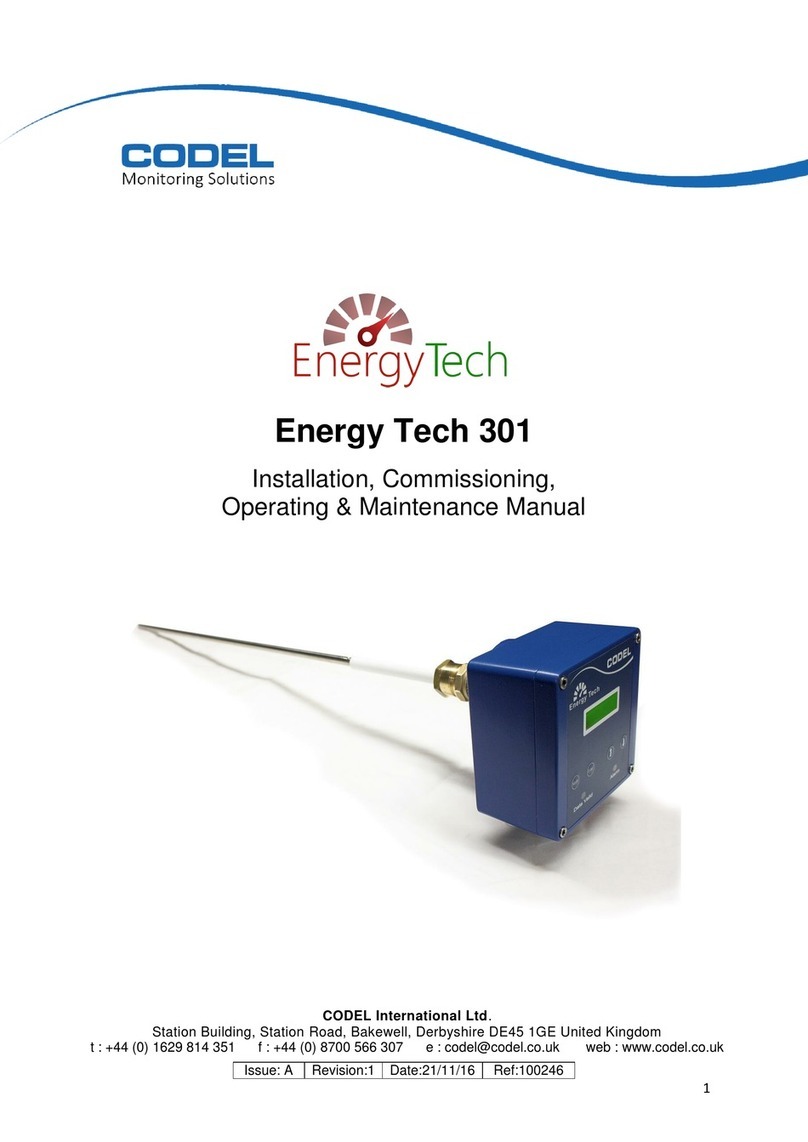
CODEL
CODEL Energy Tech 301 Installation, Commissioning, Operating & Maintenance Manual

Foxcroft
Foxcroft FX-300-F instruction manual


